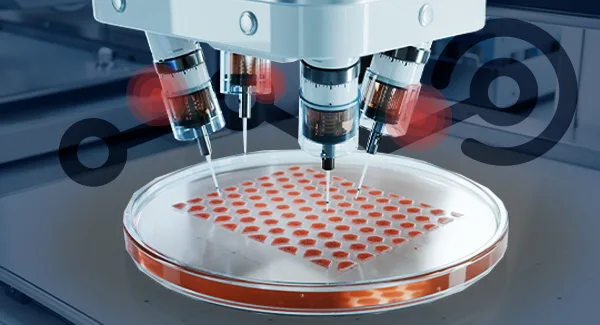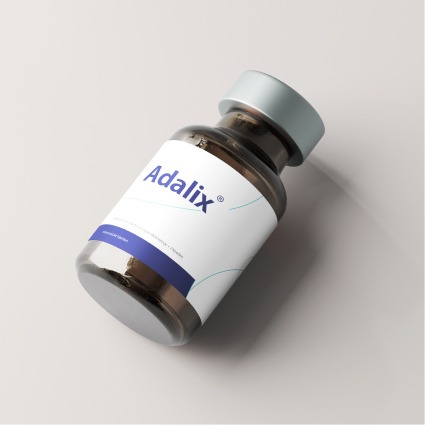Abstract
Gene therapy has emerged as a revolutionary approach in the treatment of genetic disorders, with Adeno-Associated Virus (AAV) platforms playing a crucial role. This article provides a comprehensive overview of the latest advancements in AAV-based gene therapy in 2024, focusing on recent clinical trials, technological innovations, regulatory approvals, and statistical data. The aim is to elucidate the current state and future potential of AAV platforms in the field of gene therapy.
Introduction
Gene therapy involves the delivery of genetic material into cells to treat or prevent diseases. Among various vectors used, AAV has gained prominence due to its safety profile, ability to infect non-dividing cells, and long-term gene expression. As of 2024, significant strides have been made in optimizing AAV vectors for enhanced efficacy and safety, expanding their applications in various genetic disorders.
Recent Advancements in AAV Technology
In the rapidly evolving field of gene therapy, the AAV platform has undergone significant technological advancements, leading to more effective and safer treatments. Innovations in vector engineering, such as capsid modifications and promoter optimization, have enhanced tissue specificity and transduction efficiency. Meanwhile, scalable production techniques and improved purification processes have bolstered the availability and consistency of AAV vectors. These technological breakthroughs are paving the way for more precise and accessible gene therapy applications, marking a new era in genetic medicine.
Vector Engineering and Design
- Capsid Modifications: Recent studies have focused on capsid engineering to enhance tissue specificity, immune evasion, and transduction efficiency. For instance, directed evolution techniques have yielded novel capsid variants with improved tropism for the central nervous system (CNS) and muscular tissues.
- Promoter Optimization: Utilizing tissue-specific and inducible promoters has improved the precision of gene expression, reducing off-target effects and enhancing therapeutic outcomes.
Manufacturing and Production
- Scalable Production: Advances in production techniques, such as suspension cell cultures and baculovirus systems, have increased the scalability and affordability of AAV vectors. This is crucial for meeting the demands of large-scale clinical trials and potential commercialization.
- Purification Processes: Innovative purification methods, including affinity chromatography and ultrafiltration, have improved the purity and yield of AAV preparations, ensuring consistency and safety in clinical applications.
Clinical Applications and Trials
The application of AAV-based gene therapy has expanded significantly, with promising results across various medical fields. Ophthalmology has seen substantial success, particularly in treating inherited retinal diseases, while neurology and cardiology are rapidly catching up with innovative therapies for conditions like spinal muscular atrophy and heart failure. Recent clinical trials have demonstrated the potential of AAV vectors to deliver lasting therapeutic benefits, highlighting their versatility and efficacy.
Ophthalmology
- Leber’s Congenital Amaurosis (LCA): The FDA-approved Luxturna (voretigene neparvovec) has demonstrated sustained efficacy and safety in restoring vision in LCA patients. Ongoing studies aim to extend this success to other inherited retinal diseases using optimized AAV vectors.
- Statistical Insight: According to clinical trial databases, the success rate of AAV-mediated gene therapy in ophthalmology stands at approximately 75%, with significant improvements in visual acuity reported in treated patients.
Neurology
- Spinal Muscular Atrophy (SMA): Zolgensma (onasemnogene abeparvovec), an AAV-based therapy, has shown remarkable results in infants with SMA, improving survival and motor function. Efforts are underway to expand this approach to other neurodegenerative disorders like ALS and Huntington’s disease.
- Statistical Insight: Clinical trials report a survival rate of over 90% in SMA patients treated with Zolgensma, with notable enhancements in motor milestones and quality of life.
Cardiology
- Heart Failure: AAV vectors are being explored to deliver genes that encode proteins involved in cardiac function, such as SERCA2a. Early-phase trials have indicated potential benefits in improving cardiac output and reducing heart failure symptoms.
- Statistical Insight: Preliminary data from ongoing trials show a 60% improvement in left ventricular function in patients receiving AAV-based gene therapy for heart failure.
Regulatory Landscape and Approvals
The regulatory environment for AAV-based gene therapies has become increasingly supportive, reflecting the growing confidence in their potential. Recent approvals by agencies such as the FDA and EMA underscore the progress made in demonstrating the safety and efficacy of these treatments. Updated guidelines focus on stringent testing and long-term monitoring to ensure patient safety. Additionally, efforts to expand global access are in full swing, aiming to make these cutting-edge therapies available to patients worldwide.
Regulatory Milestones
- FDA and EMA Approvals: The regulatory agencies have streamlined approval processes for gene therapies, recognizing the transformative potential of AAV vectors. In 2024, several AAV-based therapies received orphan drug designation and breakthrough therapy status, expediting their path to market.
- Safety and Efficacy Guidelines: Updated guidelines emphasize rigorous preclinical and clinical testing to ensure the long-term safety and efficacy of AAV-mediated gene therapies. These include comprehensive biodistribution studies, immunogenicity assessments, and long-term follow-up protocols.
Global Reach and Accessibility
- Expanding Access: Efforts are being made to ensure global accessibility of AAV-based therapies. Initiatives like the WHO’s prequalification program and international collaborations aim to bring these advanced treatments to low- and middle-income countries.
- Statistical Insight: The number of AAV-based gene therapy approvals worldwide has increased by 30% in the past year, with a growing number of trials being conducted in diverse populations.
Challenges and Future Directions
Despite the remarkable progress in AAV-based gene therapy, several challenges remain that must be addressed to realize its full potential. Immune responses and long-term safety are critical concerns that require innovative solutions. Enhancing the precision of targeting and overcoming biological barriers are also crucial areas of focus. As researchers and clinicians continue to push the boundaries of what’s possible, ongoing efforts promise further to enhance the efficacy and safety of AAV gene therapies.
Immune Response and Safety Concerns
- Immune Evasion Strategies: Developing strategies to mitigate immune responses, such as transient immunosuppression and capsid modifications, remains a priority to enhance the safety and efficacy of AAV therapies.
- Long-term Follow-up: Comprehensive long-term studies are essential to monitor potential delayed adverse effects and ensure the sustained efficacy of AAV-mediated gene therapies.
Targeting and Delivery
- Precision Targeting: Enhancing the specificity of AAV vectors to target diseased tissues while minimizing off-target effects is a key focus area. This includes the development of next-generation capsids with tailored tropisms and improved delivery methods.
- Crossing Biological Barriers: Innovations in delivery techniques, such as intrathecal and intravitreal injections, aim to overcome biological barriers and improve the distribution of AAV vectors to target tissues.
Conclusion
The advancements in AAV-based gene therapy in 2024 highlight the transformative potential of this technology in treating a wide range of genetic disorders. With ongoing innovations in vector design, manufacturing, and clinical applications, AAV platforms are poised to revolutionize the field of gene therapy. The increasing number of clinical trials and regulatory approvals underscores the growing confidence in the safety and efficacy of AAV-mediated treatments. As the field progresses, addressing challenges related to immune responses, targeting, and long-term safety will be crucial to fully realizing the potential of AAV platforms in gene therapy.

